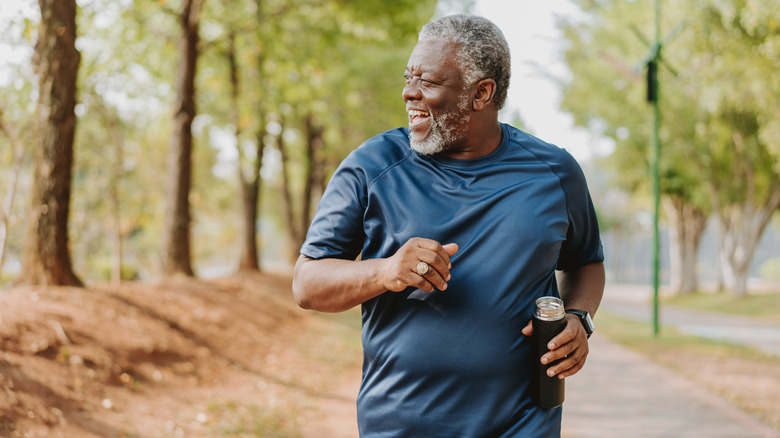What Happens To Your Blood Pressure Right After Exercising (And A Major Warning Sign To Look Out For)
While you're sitting down and at rest, your heart beats between 60 and 100 times a minute. If you have normal blood pressure, your systolic blood pressure is below 120 and diastolic blood pressure is less than 80. When you begin exercising, your heart has to work a little harder. As your muscles move, they need more oxygen, so your heart rate ticks up as the heart sends more blood to those muscles. Your heart also increases how much blood it pumps with each pulse.
If someone were to take your blood pressure while you exercise, you might notice your systolic blood pressure shoot as high as 200 mm Hg while your diastolic remains steady or lower. Your systolic blood pressure is often more responsive to factors such as stress, caffeine, or exercise, and your diastolic is less likely to see these temporary fluctuations. After exercising, your blood pressure could still be elevated for up to half an hour. That's why the U.S. Centers for Disease Control and Prevention suggests waiting at least 30 minutes after exercise to check your blood pressure. However, you should be concerned if your systolic blood pressure is higher than 200 mm Hg or if it takes a long time for your blood pressure to return to normal.
Extremely high blood pressure during exercise could indicate future hypertension
Exaggerated blood pressure in response to exercise occurs when your systolic blood pressure reaches 210 mm Hg or higher for men or 190 mm Hg for women, even if you have normal blood pressure. A 2020 article in the European Heart Journal studied exaggerated blood pressure during exercise and found that those who had these blood pressure spikes had underlying heart issues that could point to future cardiovascular problems. This shows that some people might have vascular problems well before high blood pressure is diagnosed.
A 2015 article in The Journal of Clinical Hypertension measured the blood pressure of 82 healthy men during a step test. The men whose systolic blood pressure reached 180 mm Hg or higher had less blood flow to their forearms, stiffer aortas, and more of the angiotensin II hormone, which raises blood pressure. This indicates that an exaggerated blood pressure response can be linked to poorer function of blood vessels, stiffer arteries, and higher levels of hormones that raise blood pressure. These conditions can lead to future cardiovascular issues.
Even regular exercisers can be susceptible to cardiovascular problems later in life. Trained athletes who experience exaggerated blood pressure response while exercising are 3.6 times more likely to develop hypertension in the future, according to a 2018 article in the European Heart Journal.
Regular exercise can control high blood pressure
Even though exercise can raise your blood pressure, moderate exercising for 30 minutes five days a week can strengthen your heart and reduce your blood pressure without medication. You can tell you're engaging in moderate exercise if you can talk in short sentences without difficulty. You're not exercising hard enough if you can sing.
If you're into running or another vigorous activity, you don't have to exercise as long or as often. On the other hand, people who aren't used to exercise might want to start with 10 minutes of walking a few times a day. People with chronic conditions might need to check with their health provider to see which exercises are safe.
To stay motivated, track your exercise using a wearable tracker. Fitness trackers and health apps can improve your health and help you see how strong your heart gets over time. A heart rate monitor will also ensure you're exercising hard enough to reap the benefits while also alerting you if your heart rate reaches an unsafe zone.



